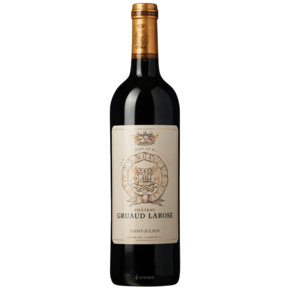Château Beychevelle 2019
| Distrikt | Saint-Julien |
| Druvor | Cabernet Sauvignon, Cabernet Franc, Merlot, Petit Verdot |
| Årgång | 2019 |
| Fyllighet | 9 |
| Fruktsyra | 9 |
| Strävhet | 9 |
| Procucenter | Château Beychevelle |
| Artikelnr | Beychevelle 406 |
| Lagerstatus | |
| Förpackningsmaterial | Trälåda OWC |
| Fraktkostnad | 169:- |
| Avnjutes mellan | 2025 - 2055 |
Här redovisar och presenterar vi kända vinskribenters utlåtande om specifika viner. Utöver dessa lägger vi in en egen kommentar när vi har provat samma vin.
Jeff Leve, The Wine Cellar Insider
Dark garnet in color, the wine pops with its nose that already shows tobacco leaf, forest floor, cedar, earth, savory herbs, spice and currants. Medium-bodied, fresh and vibrant, with soft, elegant, polished tannins along with ample blackberries and red currants on the mid-palate and in the finesse styled finish. Drink from 2028-2050.
VertdeVin
The nose is powerful, elegant, precise and offers freshness, a nice power/finesse and a nice fine, racy and tense grain. There are notes of crunchy blackcurrant, violet, lily and slightly fresh nutmeg combined with hints of boysenberry, wild red berries, a hint of violet plum, discreet spice and a subtle hint of pepper, toast and a very discreet, almost aniseed-like note. The palate is nicely managed, elegant and offers delicacy, suppleness, a nice fine grain, a racy minerality as well as a nice richness and substance all in elegance / with an airy side. All in balance. On the palate this wine expresses notes of pulpy/flavoured blackcurrant, boysenberry and more slightly purple plum combined with hints of raspberry, crunchy blue berries, dark chocolate, cardamom and a subtle hint of nutmeg and vanilla. The tannins are precise, elegant and airy. Good length.
Robert Parker Wine Advocate
Aromas of raspberries, currants, pencil shavings and sweet spices introduce the 2019 Beychevelle, a medium to full-bodied, supple and enveloping wine that's fleshy and seamless, with a generous core of fruit, ripe tannins and succulent acids, concluding with an expansive finish. This is an open-knit, demonstrative Saint-Julien that will offer a broad drinking window.
Château Beychevelle is a large landowner, at 250 hectares, but of these only 90 are planted to vines and only 78 located within the Saint-Julien appellation (the rest are in neighboring Cussac). Around 60% of those holdings are located on the plateau between Branaire-Ducru and Ducru-Beaucaillou, and the percentage of Merlot is quite elevated at 40%—though it's declining, as replanting here favors Cabernet Sauvignon. Since 2008, viticulture has become much less dependent on chemicals. The grand vin itself represents just over half of the production, and in the last decade or so, it has become a touch richer and more structured in style, while retaining the fleshy, charming style that has won the estate so many admirers.
Jeb Dunnuck
Coming in close to equal parts Cabernet Sauvignon and Merlot, with just a splash of Cabernet Franc, the 2019 Château Beychevelle shows a classic Saint-Julien purity and finesse-driven style as well as notes of red and blue fruits, sappy flowers, tobacco, and chalky minerality. Medium to full-bodied on the palate, I love its overall balance and purity of fruit, it has silky tannins, no hard edges, and a great finish. This wine always has upfront appeal, but the 2019 will benefit from 4-5 years of bottle age and should have 30 years of overall longevity.
Druvor
52% Cabernet Sauvignon, 40% Merlot, 5% Cabernet Franc & 3% Petit Verdot.
Tasting note
'Aromas of raspberries, currants, pencil shavings and sweet spices introduce the 2019 Beychevelle, a medium to full-bodied, supple and enveloping wine that's fleshy and seamless, with a generous core of fruit, ripe tannins and succulent acids, concluding with an expansive finish. This is an open-knit, demonstrative Saint-Julien that will offer a broad drinking window.
Château Beychevelle is a large landowner, at 250 hectares, but of these only 90 are planted to vines and only 78 located within the Saint-Julien appellation (the rest are in neighboring Cussac). Around 60% of those holdings are located on the plateau between Branaire-Ducru and Ducru-Beaucaillou, and the percentage of Merlot is quite elevated at 40%—though it's declining, as replanting here favors Cabernet Sauvignon. Since 2008, viticulture has become much less dependent on chemicals. The grand vin itself represents just over half of the production, and in the last decade or so, it has become a touch richer and more structured in style, while retaining the fleshy, charming style that has won the estate so many admirers.'
Robert Parker Wine Advocate




